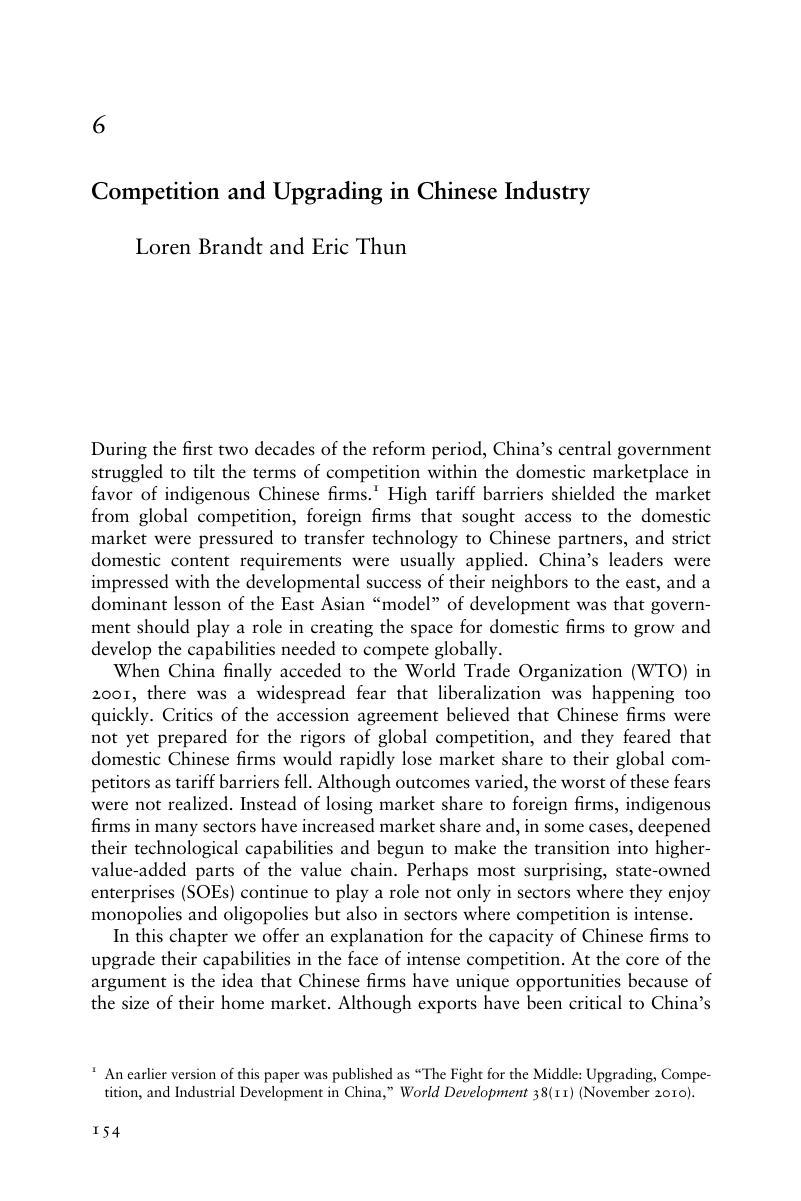Book contents
- State Capitalism, Institutional Adaptation, and the Chinese Miracle
- Comparative Perspectives in Business History
- State Capitalism, Institutional Adaptation, and the Chinese Miracle
- Copyright page
- Dedication
- Contents
- Tables
- Figures
- Contributors
- Acronyms
- Book part
- 1 Introduction
- Section I Evolution of the State Sector
- Section II Outcomes and Processes
- 4 Stability, Asset Management, and Gradual Change in China's Reform Economy
- 5 The Emergence and Evolution of Chinese Business Groups: Are Pyramidal Groups Forming?
- 6 Competition and Upgrading in Chinese Industry
- Section III The Big Picture: Historical, Social, and Systemic Perspectives
- Index
- References
6 - Competition and Upgrading in Chinese Industry
from Section II - Outcomes and Processes
Published online by Cambridge University Press: 05 June 2015
- State Capitalism, Institutional Adaptation, and the Chinese Miracle
- Comparative Perspectives in Business History
- State Capitalism, Institutional Adaptation, and the Chinese Miracle
- Copyright page
- Dedication
- Contents
- Tables
- Figures
- Contributors
- Acronyms
- Book part
- 1 Introduction
- Section I Evolution of the State Sector
- Section II Outcomes and Processes
- 4 Stability, Asset Management, and Gradual Change in China's Reform Economy
- 5 The Emergence and Evolution of Chinese Business Groups: Are Pyramidal Groups Forming?
- 6 Competition and Upgrading in Chinese Industry
- Section III The Big Picture: Historical, Social, and Systemic Perspectives
- Index
- References
Summary

- Type
- Chapter
- Information
- Publisher: Cambridge University PressPrint publication year: 2015
References
- 2
- Cited by



